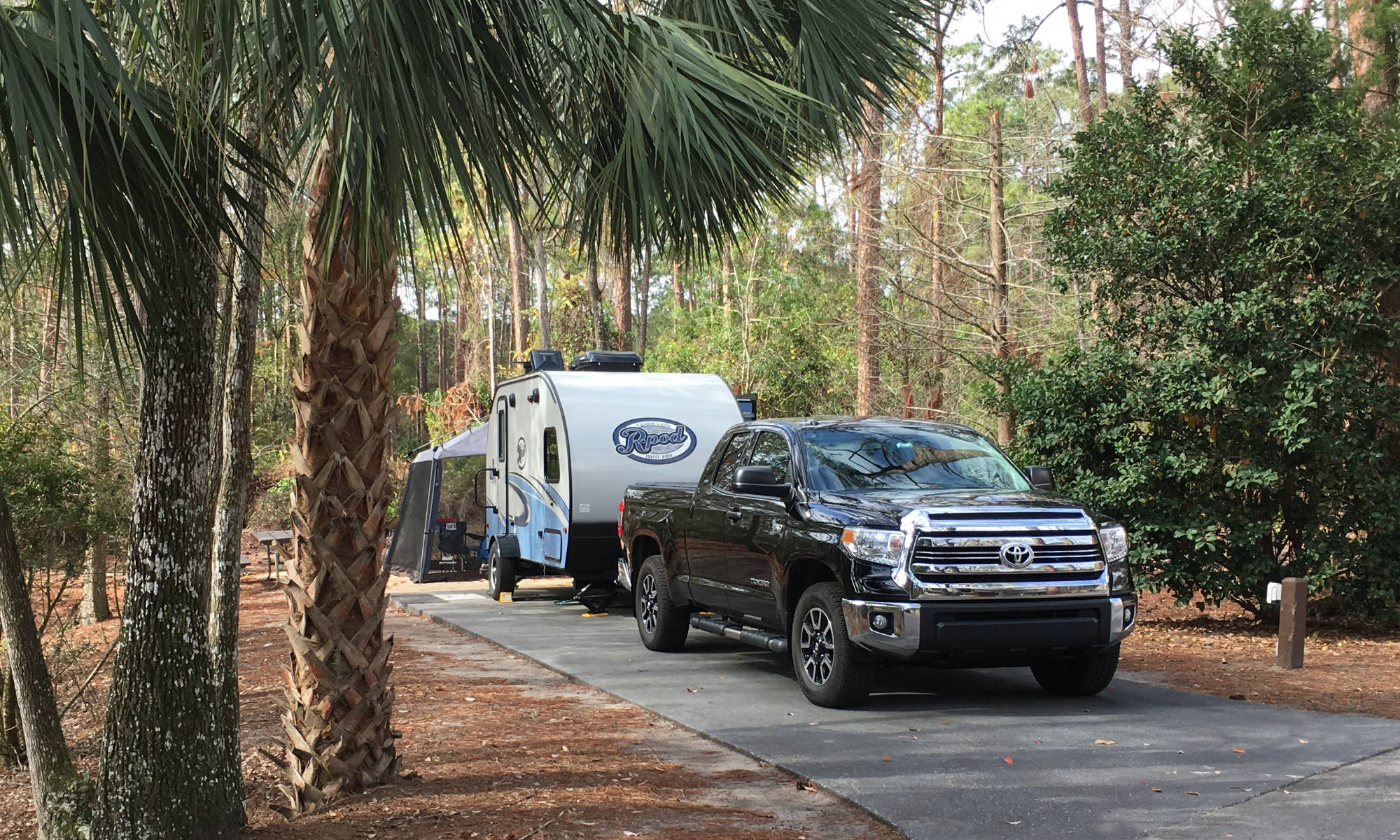In this blog, we’ll be going over the latest RV news and travel trends, including the latest news coming out of the 2022 Florida RV Supershow that recently wrapped up in Tampa and the final 2021 RV shipment numbers. While a record year, not everything is rosy. There is a lot to cover, so let’s get to it.
First up, the recovery of air travel falters. Every month for almost two years, we’ve covered how air travel has fared during the pandemic. After the holidays, it appears that air travel is not doing all that well when compared to two years ago. While air travel had recovered to about 85% of late 2019 levels, before and during the 2021 holiday period, the rate has dropped below the 70% level in late January, well below that trend. This could be in response to flight crew shortages this month due to the rapid spread of the Covid Omicron variant throughout the U.S. Whatever the cause, it is a big hit to air travel just now.
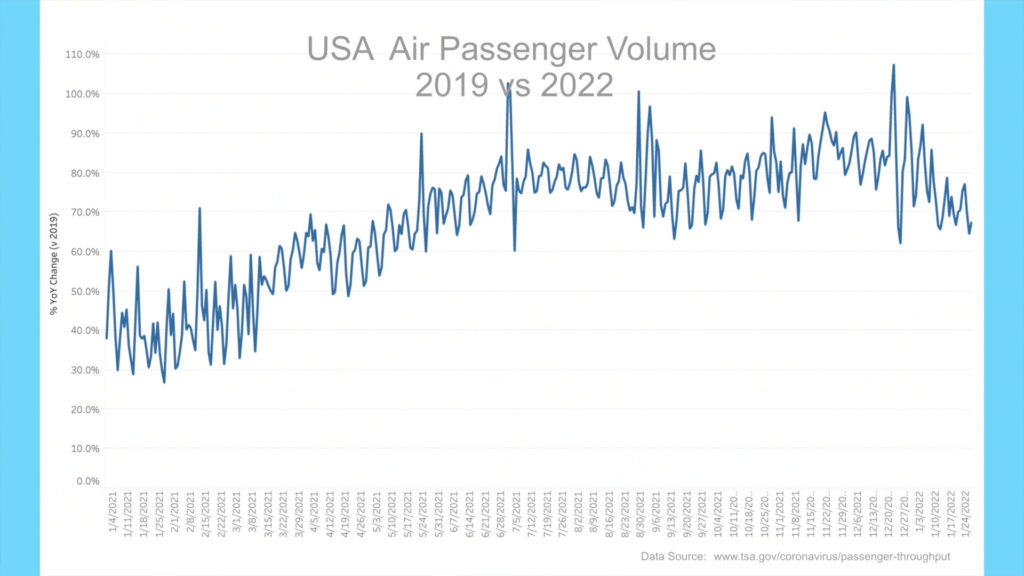
RV production ended 2021 at an all-time record, surpassing 600,000 units for the first time. The huge milestone for the industry is a testimony to its ability to quickly adapt and ramp up production during parts and labor shortages. Many dealer lots are filling up slowly with new RVs, yet there are still billions of dollars of RVs on backorder.[1]
The flip side of the massive number of RVs produced are continuing quality concerns that we have spoken about in recent news shows. If you ramp up production so quickly, it means that the average line worker’s tenure shortens, and quality usually suffers. Unemployment is still extremely low in Elkhart County, Indiana (1.4% in November 2021), where most manufacturers are located.
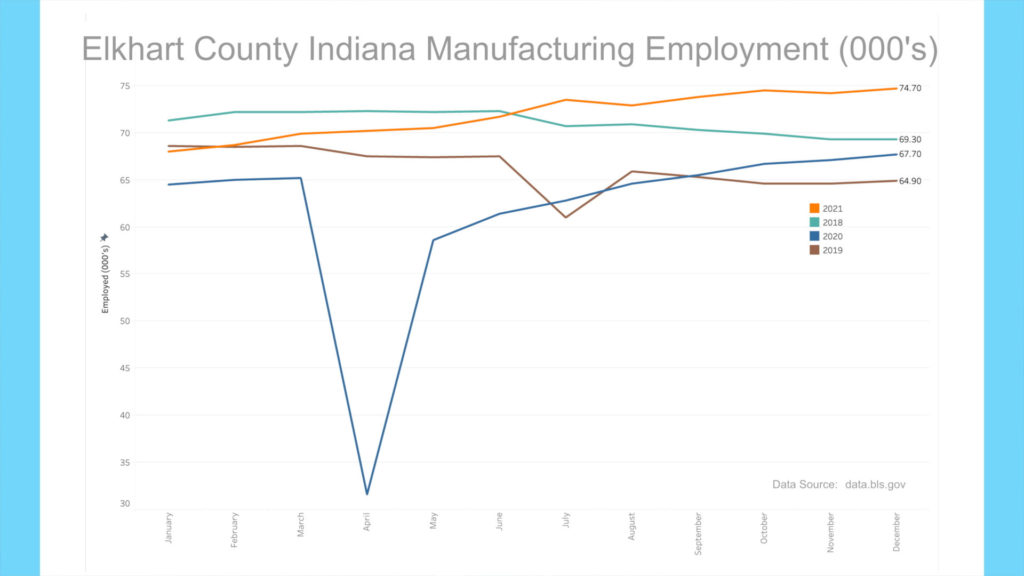
Looking at the total number of people employed in Elkhart County, Indiana[2] in manufacturing over the past few years, we see that 2021 has had a massive employment growth. There are roughly 10,000 more factory workers in Elkhart at the end of 2021 vs. 2019, a 15% increase. This means that on average, normal attrition notwithstanding, roughly 1 of 6 workers on the line have less than two years of experience. Interestingly, the industry started to see a downturn in 2018 and 2019, and the pandemic appears to be what turned production around. Production and subsequent employment levels have steadily increased after the initial pandemic hit in April and May 2020.

What is not rosy is the poor shipment numbers in 2021 for more expensive Class A and Class C motorhomes. Large Class A motorhomes had a poor showing all year, with December volume lower than any recent year, and class C motorhomes fared little better – ending up lower than all years except 2018 and 2019. These lower volumes for motorhomes may be due to significant parts shortages. This would make sense since much of the inputs for motorhomes are dependent on auto industry suppliers, who have been severely impacted by shortages in 2021.

On the other hand, travel trailer shipments have been on a tear all year, beating every monthly record. This is the lion’s share of production from the industry, and 2021 will go down as a record year for travel trailer production. Travel trailers are much less dependent on auto part supplies, so the industry was able to adapt to various shortages and still break records.
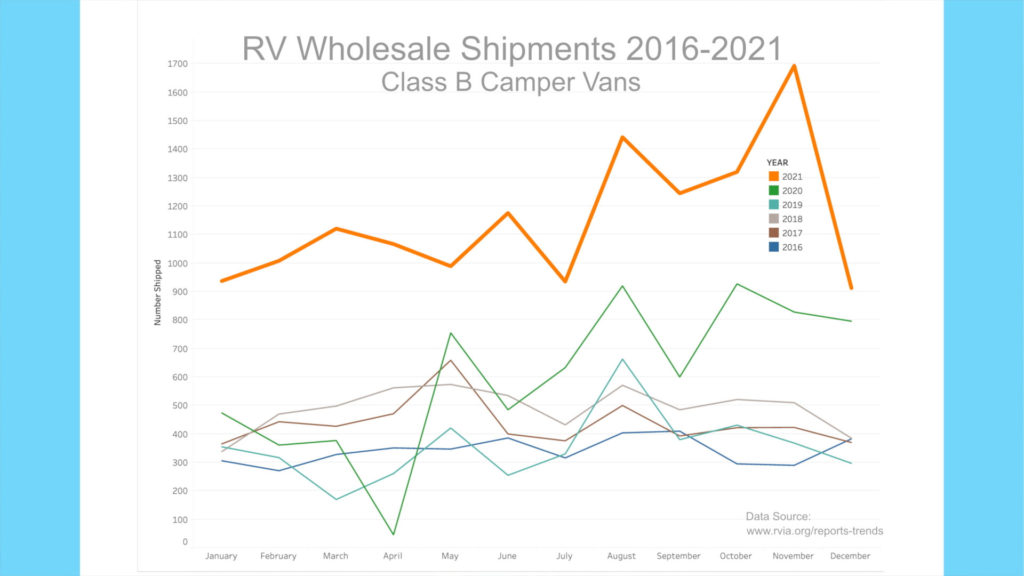
The other big story in the 2021 numbers is the volumes of Class B camper vans shipped. While Class A and Class C motorhome volumes shrunk, Class B vans grew significantly, with 7 of 12 months topping 1,000 shipments and every month breaking volume records. It is evident that during the pandemic, the affluent have taken up camping and working remotely and are choosing to do so traveling in costly and well-equipped Class B camper vans.
New RV volumes on RVTrader.com continue to grow, meaning the record year for RV manufacturer shipments is showing up on dealer lots to some extent. There have been over 150,000 new RVs for sale on the site for the past five weeks. Meanwhile, used RVs for sale on RVTrader.com have stalled in the 47–48,000 range for the past nine weeks. For the first time since we have been keeping records, there are over 200,000 New and Used RVs for sale of RVTrader.com and have been for the past four weeks. With more new RVs being shipped, at some point, it should mean lower prices for used RVs as used RV prices seem to be a function of discounted (real) prices on new RVs.
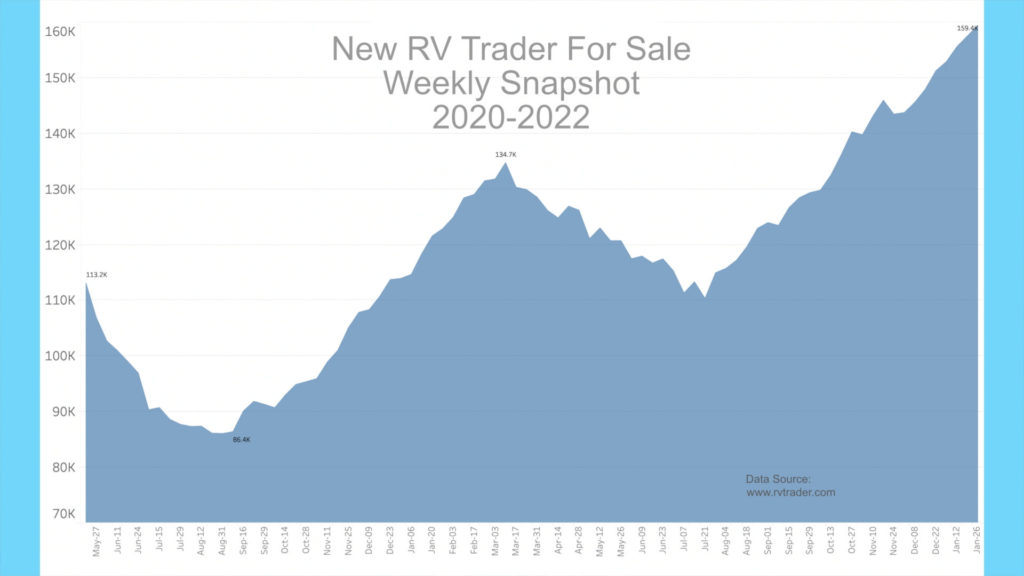
The bigger question is if we are at a market top regarding pricing. At some point, the laws of supply and demand will kick in with more and more new RVs flooding the market. It may very well be that demand slows while supply increases in the next few months. By May or June of 2022, we will know more clearly if RVs on dealer lots are selling. Another indicator to watch as spring approaches is the number of used RVs for sale. If this number increases dramatically, it could mean demand is faltering, and prices should fall accordingly.
The Florida RV Supershow was held in Tampa on January 19-23, 2022, and unlike last year, most RV manufacturers were present to show off their current model RVs. New entrant Ember RV brought several new models to the show, including the fully solar 191MDB. According to Chris Barth of Ember, the 191MDB was set to run the entire show without being plugged in to demonstrate how the max solar package can perform while off-grid.[3] Other manufacturers showed off current models as new model launches were not a priority with the substantial production increases in 2021.
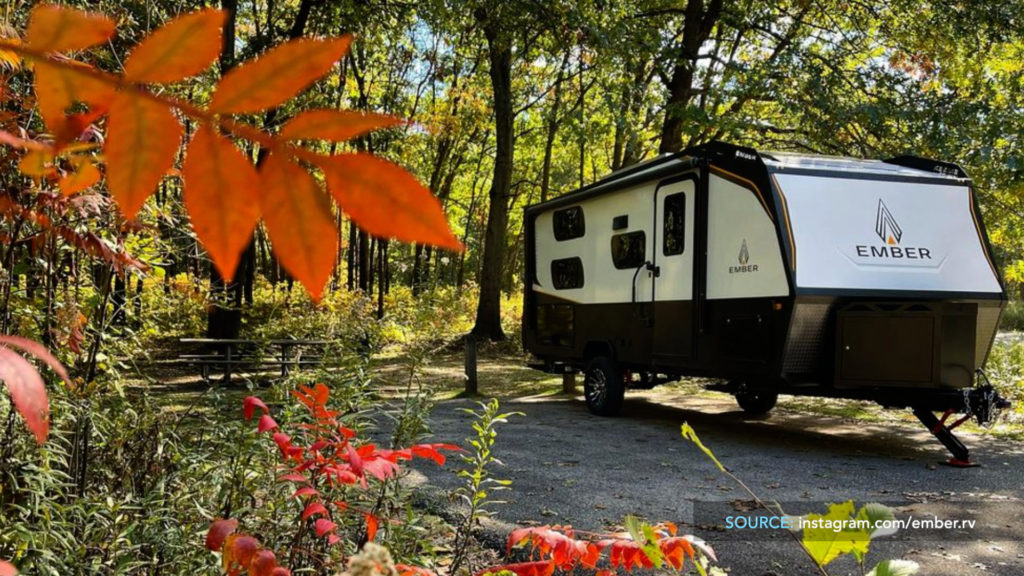
Likely the most significant news coming from the Supershow was the revealing of Winnebago’s electric Class-B camper van and Thor’s electric Airstream travel trailer. Winnebago showed their prototype Class-B camper van that is fully electric, and according to RVNews.com, “The all-electric vehicle has no propane, generator or other fuel included, and Winnebago executives said the vehicle can be charged at home, through shore power at campgrounds (with an interface cable) or a regular EV charger.”[4] The concept vehicle has a range of 125 miles, and the electric power train is married to a Ford Class 3 Transit chassis. Winnebago’s developers claim the vehicle can be fully charged in 45 minutes using a high-voltage charger. Their decision to build a lower-range electric vehicle was justified by the RVIA estimate that 54% of RVers drive 200 miles or less to go camping.

My take is that this is not near enough range to be sellable, even if the prototype’s range grows to 200 miles when produced for sale. My problem is with the statistic used to justify building a low-range EV Class-B camper van. The real question needs to be how far, on average, the owner of Winnebago’s other Class-B camper vans travel on typical road trips. Without this clarification, the statistic still says that 46% of RVers travel more than 200 miles to go camping.
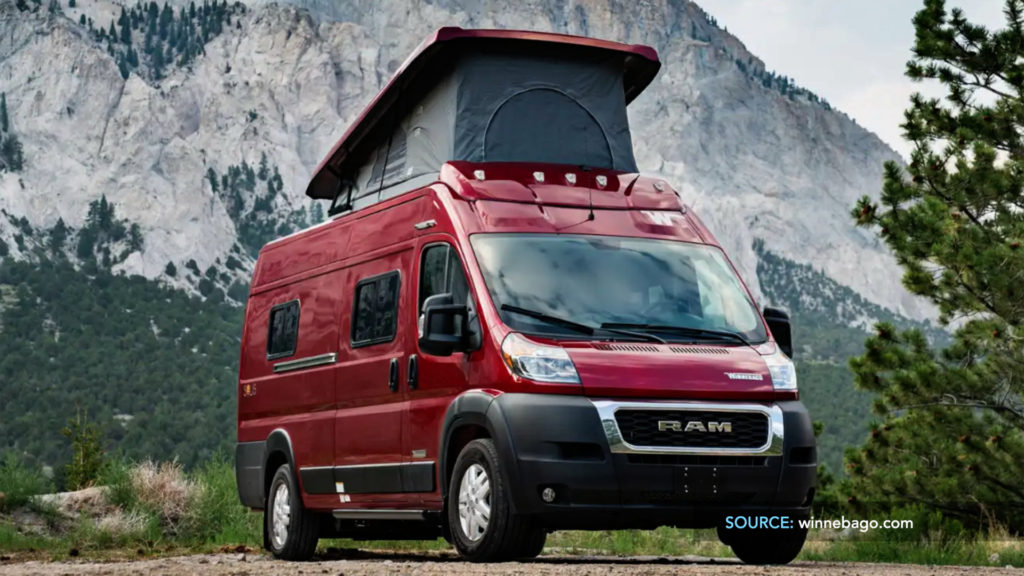
The prototype developers say that range will likely be much higher with the production vehicle. Still, my reaction is that they first need to poll Class-B owners more closely, as usage is likely very different from the assumptions in the RVIA data. How interested would you be in buying a six-figure Class B all-electric camper van with a 200-mile range? Let me know in the comments.
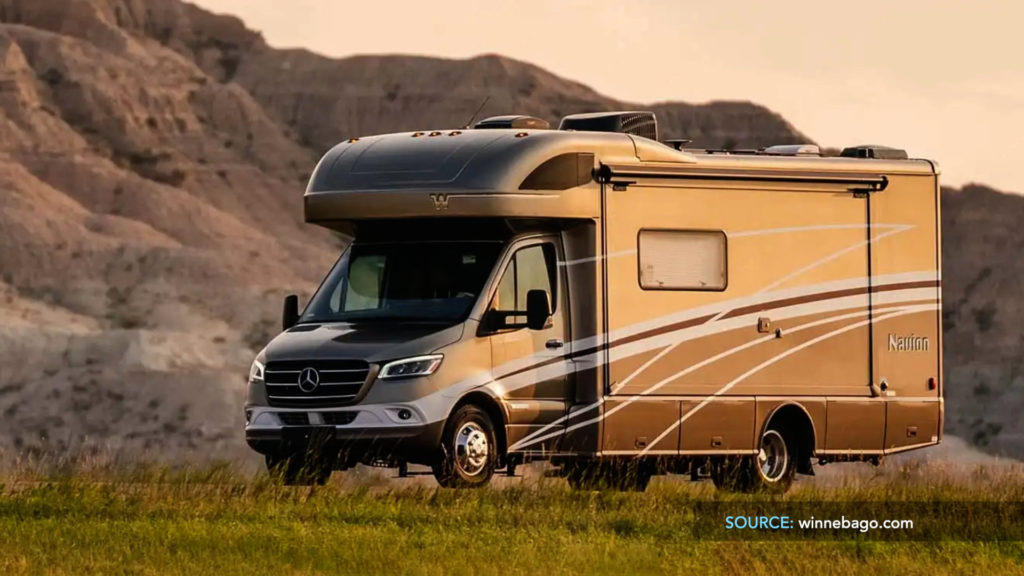
The other real-world problem I have with the assumptions used by the developers is that this EV RV can be charged via shore power at campgrounds with the proper interface cable. The electricity drawn from the potential of many campers with EVs and EV RVs all charging simultaneously could cripple many campgrounds that have antiquated electrical service. Most private, state park, and national park campgrounds would need a total reworking of their electrical service at enormous expense. This problem will not show up initially, but as more people camp with EVs and EV RVs in the future, there will be a vast infrastructure difficulty to overcome. Anyone with a campground, private or public, needs to see this distant train coming and begin now to plan.
On the other hand, Thor Industries, the largest RV manufacturer, may be on to a potentially game-changing idea that deals more with the large volume travel trailers market vs. the small camper van market. Did you know that for 2021, over 420,000 towable travel trailers were shipped vs. just under 14,000 Class-B camper vans? This means that any fundamental innovation to the travel trailer business will have a considerable impact versus innovation on small-quantity high-cost motorized Class-B vans. This is why Thor’s direction in the EV RV world will likely significantly affect the greater RV industry.
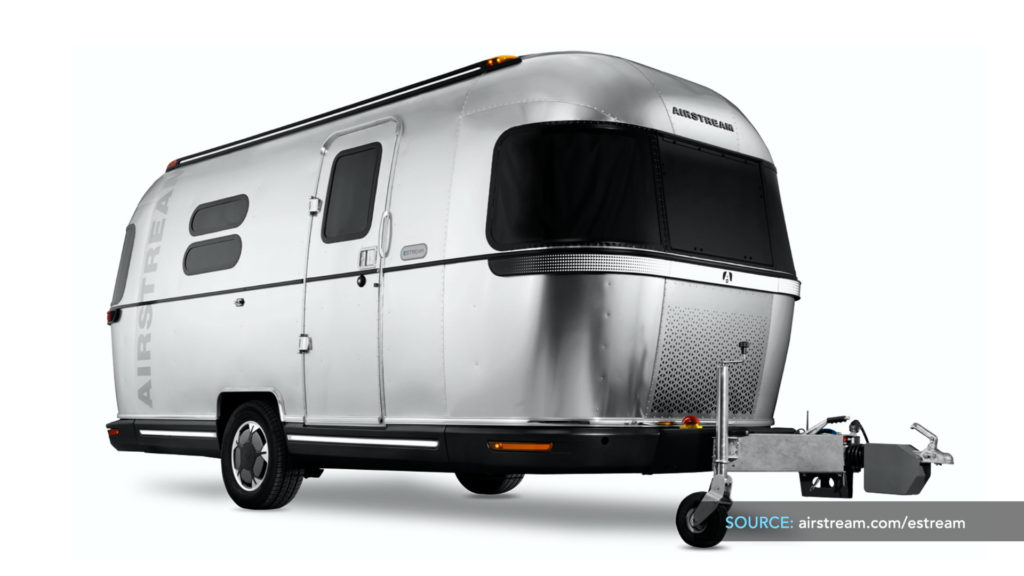
Thor is working with German auto part supplier ZF AG on a fully electric travel trailer chassis that will house a battery pack in the subfloor to power the trailer wheels. According to Bob Martin, CEO of Thor, they tested towing an Airstream equipped with this system tethered to an Audi eTron Sportback EV with a 244-mile range. Because of the separate drive system on the Airstream trailer, affectionately labeled the eStream, and the regenerative braking on the trailer that can feed juice back to the Audi EV, the Audi increased range while towing by 40 miles or 16%.[5]
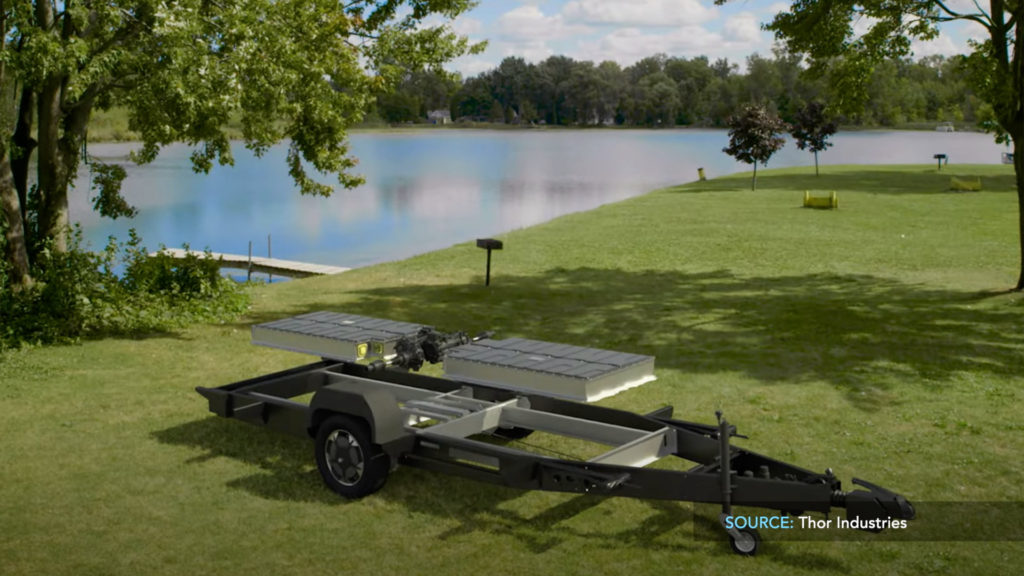
Thor’s chief innovation officer, says it is not just about creating an independent EV RV drive system, “Our teams have worked to significantly improve and reduce the drag of our vehicles, which is key to a true electric experience. Utilizing our high voltage system, we are developing smaller and more energy efficient components with our partners, such as AC units and kitchen appliances, making our products even more sustainable.”[6] (Josef Hjelmaker)

My take is that Thor is leading the way to delivering a workable solution to the problem of EVs and RV range anxiety. There are obvious questions in terms of how much weight a fully self-drive travel trailer adds to the towing equation given a full battery pack under the floor and given motors tied to each wheel. Also, looking at recent animations of the eStream, tank size questions came to mind given the batteries’ large in-frame space. On top of this, price is an obvious issue when all this technology is added to a travel trailer. Real economies of scale will need to be present to bring costs down. Yet more than these issues are the difficult questions about deficient electric charging infrastructure on the road and more so at campgrounds.
It’s busy at campgrounds. KOA announced record revenue growth in 2021, which speaks to the sheer number of new RVers on the road of late. According to Mike Gast of RVTravel.com, “KOA reported a 33.2% revenue increase over 2020 and a 33% increase in revenue over 2019, the company’s previous highest-grossing year, in their Q4 Business Report.”[7]

KOA President & CEO Toby O’Rourke said, “We are excited to close 2021 and go into our 60th year in business with our strongest financial performance ever, and even more pleased with the indicators of future growth. The pandemic served as a catalyst for many people to try camping for the first time, and with a 51.1% increase in advanced deposits, that isn’t slowing down.
Also, according to RvTravel.com, “The company’s system of franchised campgrounds continued its growth in 2021. End-of-year totals show 26 new franchise locations across the KOA system. Thirteen of the locations added in 2021 are new construction contracts, indicating demand for more camping inventory.” These expansion plans give insight into the direction of RV camping going forward. The anticipation is that more people will discover an RV lifestyle, so investing in more campground capacity is considered an intelligent use of resources.
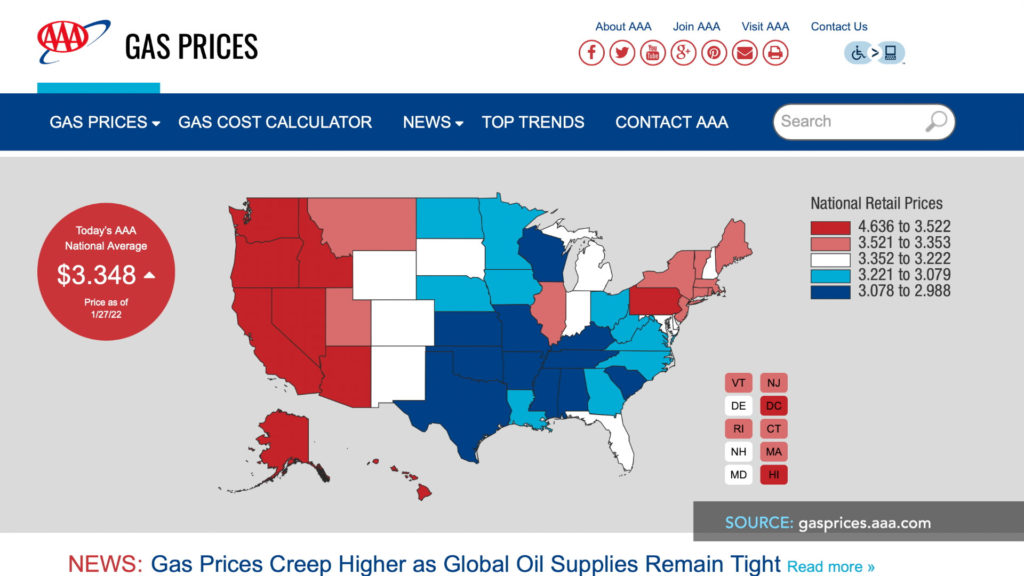
Finally, for today’s news, fuel prices are staying stubbornly high. AAA’s latest figures show that as of January 27th, 2022, the current national average price per gallon of regular unleaded is $3.348[8], up 6.2¢ from a month ago and up from $2.408 a year ago. Given a long trip of 3,000 miles with your tow vehicle getting 10 mpg, it would cost you $1004.40 now vs. only $722.40 a year ago — over a 39% increase.
That’ll do it for today’s blog.
All the best in your camping endeavors!
We’d love for you to join the On The Road Team by subscribing to the YouTube channel. You can also follow John on Facebook @JohnMarucciOnTheRoad.
As always, thanks to our teammates who support the channel by starting their shopping from the On The Road Amazon Storefront. Your support is greatly appreciated!
- https://s23.q4cdn.com/270606922/files/doc_financials/2022/q1/FY-2022-1Q-Investor-Presentation-(Final).pdf ↑
- https://data.bls.gov/timeseries/SMU18211403000000001 ↑
- https://www.rvnews.com/exclusive-2022-florida-rv-supershow-promises-product-introductions/ ↑
- https://www.rvnews.com/exclusive-winnebago-presents-erv-concept-at-florida-supershow/ ↑
- https://www.rvnews.com/exclusive-thor-ceo-discusses-electric-future/ ↑
- https://www.rvnews.com/exclusive-thor-ceo-discusses-electric-future/ ↑
- https://www.rvtravel.com/koa-set-record-revenue-growth-2021/ ↑
- https://gasprices.aaa.com ↑
